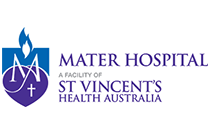Revision Knee Replacement
What is Revision Knee Replacement?
Revision knee replacement surgery involves replacing part or all your previous knee prosthesis with a new prosthesis. Although total knee replacement surgery is successful, sometimes the procedure can fail due to various reasons and may require a second revision surgery.
Indications for Revision Knee Replacement
Revision knee replacement surgery may be advised for patients who have one or more of the following conditions:
- Trauma to the knee joint
- Chronic progressive joint disease
- Increased pain in the affected knee
- Worn out prosthesis
- Knee instability or a feeling of giving way while walking
- Loosening of the prosthesis
- Infection in the prosthetic joint
- Weakening of bone around the knee replacement, a process known as osteolysis (bone loss)
- Stiffness in the knee
- Leg length discrepancy
- Fracture
Revision Knee Replacement Procedure
Revision knee replacement surgery may involve the replacement of one or all the components.
The surgery is performed under general anaesthesia. Dr. Thornton-Bott usually uses the original scar to expose the knee joint. The old femoral component of the knee prosthesis is removed with specialised tools and saws. The same happens with the old tibial component and plastic liner. The femur is then prepared to receive the new component. In some cases, there is loss of bone from the femur during the process and bone graft or a metal wedge may be used to make up for the lost bone.
Next, the tibial component along with the old plastic liner is removed in a similar fashion to the femur. The tibia is prepared to receive the new component. Like the femur, the lost bone is replaced either by a metal wedge or bone graft. Then, a new tibial component is secured to the end of the bone using bone cement. This often requires a stem on the tibial implant to improve stability. A new plastic liner will be placed on top of the tibial component.
If the patella (kneecap) has been damaged, Dr. Thornton-Bott will remove and attach a new plastic component. The tibial and femoral components of the prosthesis are then brought together to form the new knee joint, and the knee muscles and tendons are reattached. Surgical drains are placed for the excess blood to drain out and the incision is closed.
Risks and Complications of Revision Knee Replacement
Like all major surgical procedures, there may be certain risks and complications involved with revision knee replacement surgery. The possible complications after revision knee replacement include:
- Stiffness in the knee
- Infection
- Bleeding
- Formation of blood clots in the leg veins
- Injury to nerves or blood vessels
- Prosthesis failure
- Patella (kneecap) dislocation
- Ligament injuries
Postoperative Care Following Revision Knee Replacement
Rehabilitation begins immediately following the surgery. A physical therapist will teach you specific exercises to strengthen your leg and restore knee movement. You will be able to walk with crutches or a walker and will quickly progress to walking sticks. Your physical therapist will also provide you with a home exercise program to strengthen thigh and calf muscles.
You will need to wear stockings on your calves for 6 weeks and take a blood thinner such as Aspirin to reduce the risk of blood clots, or deep venous thrombosis (DVT).
Sometimes with revision knee surgery, you may be placed on restricted weight bearing to protect a complex revision, especially if the patella tendon is detached.













